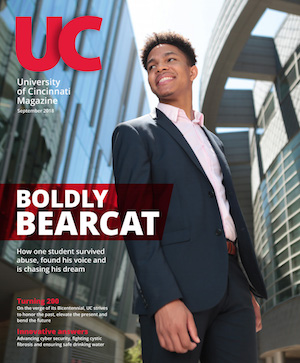Another challenge, says Sorcher, was that the artist uses vibrant, industrial dyes. “We didn’t want too much of the book to come in contact with the enclosure because we didn’t want the color to wear off – the book is so beautiful,” says Sorcher. The technician started the project with what’s called a tall, banker’s box. “It’s the type of box that would be used to store reams of paper,” says Sorcher. Using archival Etha Foam, she fitted the box with wedges and blocks to keep Mother Hubbard supported, standing upright and touching as little of the box as possible. A pullout tray allows students and artists to take the book out of the box without ever needing to touch it.
“Veronica had each of us open the box at different times,” says Holly Prochaska, head of the Preservation Lab. “She was trying to see if intuitively, we could open it. So, we were the test subjects in using the box.”
“Each of the technicians created a box to house books in the Johnson collection,” says Preservation Lab conservation technician Jessica Ebert. “They ranged from the very simple clamshell-type of corrugated box that was made for ‘Sailing to the Dance of Day,’ to Veronica’s very involved custom creation for Mother Hubbard,” says Ebert.
All of the Paul Johnson creations now housed in the DAAP Library are one-of-a-kind, handmade books: “Old Mother Hubbard in Cincinnati,” “Spirit House,” “Secret Garden” and “Sailing to the Dance of Day.” Jennifer Krivickas, head of the DAAP Library, says the library is the only library in the world to have a collection of his works. His creations are also in the prestigious holdings of the Library of Congress, Yale University, Harvard University and the Public Library of Cincinnati and Hamilton County.

 Past Issues
Past Issues